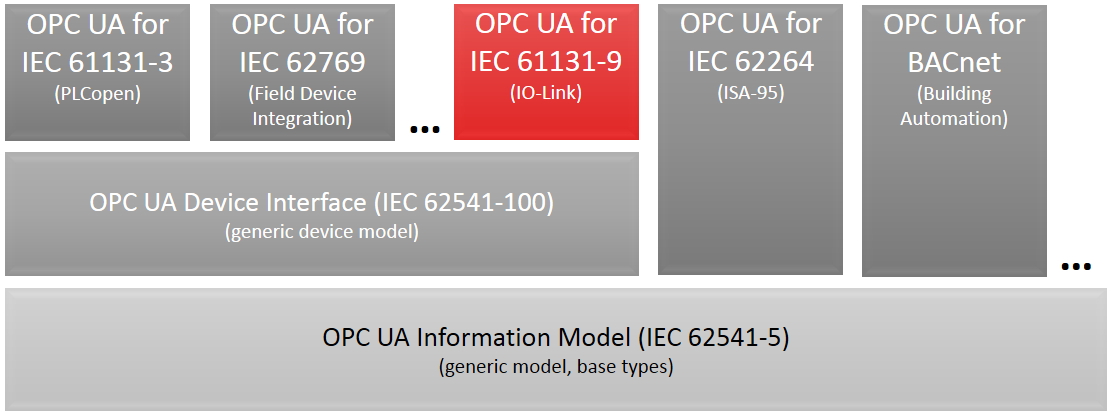On the basis of existing use cases, the IO-Link Community developed a method for implementing an integration of IO-Link in OPC UA in 2017. OPC UA is an industrial M2M communication protocol that has successfully established itself around the world as a standard in the comprehensive integration of IT on the field level. “Plattform Industrie 4.0”, an initiative funded by the German Federal Ministry, sees OPC UA as a suitable architectural model for integrating sensors/actuators above the IT systems (“cloud”) on the automation level.
Integrating IO-Link data to higher levels
For IO-Link, the point-to-point protocol for sensors/actuators, now with more than 7,000 available different masters and devices, a fiedbus-independent integration via OPC UA is very interesting, as it can be used to further expand the breadth of possible automation solutions: IO-Link masters, which bundle the data from sensors and actuators, can process these data not only as fieldbus nodes, but can also make higher levels available inside and outside of the automation pyramid via OPC UA.
In this way, sensor data can be integrated with little effort and seamlessly in MES and ERP systems, which is often referred to as “sensor-to-cloud” functionality. For many applications, this opening to OPC UA means new flexibility for the use of sensors and actuators.
In the past nine months, the IO-Link Community has therefore developed a corresponding standard for the data and function model to allow IO-Link devices and IO-Link masters to be represented accordingly in OPC UA in the future. The so-called “Companion Standard IEC 61131-9” specification now available for the integration of IO-Link in OPC UA, follows the requirements of the OPC Foundation.
All part of a joint effort…
The joint working group of the IO-Link community and the OPC Foundation (C4/PG51) charged with developing this Companion Standard is currently working at full speed to complete this specification so as to be able to distribute a review-ready version to all IO-Link, PROFIBUS & PROFINET International (PI) and OPC Foundation members. In addition, the implementation of reference systems, which are necessary for the test, has begun as has the development of products that can offer this OPC UA interface for IO-Link.
Employees from more than 20 companies are actively involved in this working group – technical experts from the IO-Link field (devices, masters) as well as experts from the OPC UA area, who have already successfully contributed to other Companion Standards. The final draft for the Companion Specification (draft for voting) is planned for May 2018. It will then undergo an in-depth review followed by approval at SPS/IPC/Drives in the fall.

